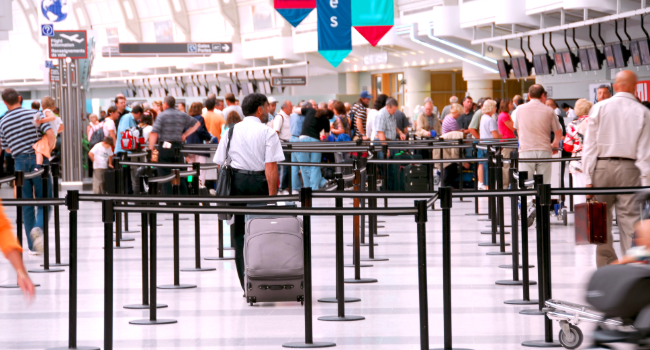
Justifying Airport Security Investments
- By Mark Storek
- Jul 29, 2024
Every article about airport security starts by telling you that airports are considered one of the most challenging environments to secure. With more than a decade of helping major international airports implement comprehensive and scalable security solutions, this is a truth.
Why then, is it so difficult to secure the budget you need for critical airport security investments?
Traditionally, security investments deliver a minimal return on investment, reducing their appeal for decision makers and budget holders across industries. However, the evolution of technologies traditionally reserved for security has made them more adaptable for broader adoption across organizational silos.
Today, security stakeholders’ investments have the potential to drive impact across every department of the airport ecosystem. Rolling out analytics delivers significant excitement as departments typically overlooked in security initiatives (operations, maintenance, passenger satisfaction, and real estate management) realize they all become beneficiaries. The ability to leverage existing investments in cameras, VMS and sub systems and provide valuable business intelligence to stakeholders at a large facility is a dramatic shift in traditional approaches to security.
A Security Tech Chameleon
It is no secret. All airports implement an integrated and layered approach to their security technology programs. These robust solutions are built to proactively prevent security events, empower rapid, real-time response and accelerate post-event investigations. While each technology component is critical to the success of each of these functions, video analytics has taken the spotlight to optimize security while delivering value across other business functions.
Video analytics is an AI-driven technology which detects, identifies, extracts and catalogs objects in video for driving diverse and comprehensive decision making based on the extracted and classified data. The analysis can be performed in real-time or over extended periods of time, enabling system operators to improve situational awareness, gather long-term trend data, and quickly review incidents. Whereas these functions have always been relevant for safety and security, they are increasingly supporting operational applications in industries from retail and hospitality to healthcare, manufacturing and finance.
For this reason -- and because video analytics software can be easily integrated into the open source, open architectures needed by airports – airport security stakeholders can now bring business justification, in the form of data-backed intelligence, to the larger airport organization.
Easing the flow of traffic is always top of mind for airport management, as long queues and overcrowding negatively impact traveler safety and experience. Video analytics can detect, classify and track objects in video feeds to provide data on crowd formation, bottlenecks and traffic patterns.
An airport can leverage common path and flow statistics to understand where bottlenecks occur, from parking or drop-off areas all the way through to the gate. Once identified, airport management can intelligently deploy staff to redirect traffic in the moment or strategically implement signage to prevent crowding in the future. The data can be leveraged to inform real-time, rule-based alerts that trigger when crowd formations are detected. Comprehensive crowd management algorithms can be used to detect and manage groupings of varying sizes to meet diverse needs throughout the airport.
Furthermore, because video analytics offers unprecedented situational awareness and visibility into an event, management is empowered to make strategic decisions during retrospective evaluations. Focused video investigation and business intelligence dashboards make scene understanding a breeze so key stakeholders can draw data-backed conclusions that improve the journey.
Enabling Intelligent Staff Deployment
Airport staff are the backbone of airport operational success, maximizing operational efficiency. However, simply employing and deploying more manpower is not effective if they are not positioned based on need.
Airport maintenance schedules are historically based on fixed intervals which do not take location or real-time traffic into account. With video analytics, maintenance managers can first evaluate traffic trends for instance, restrooms, across all terminals. Based on the data, they can set rule-based alerts that trigger cleaning only when a specified number of people have used the facilities. This approach eliminates unnecessary cleaning while ensuring adequate resources are available where and when they are needed.
With better long-term intelligence and real-time situational awareness, airport managers can direct staffing and services within different terminals to accommodate known trends, prevent crowding and plan for contingencies. Intelligent video analytics arms airport management with data to predictively hire and proactively deploy staff based on data-backed intelligence from their own environment.
Beyond driving operational efficiency, intelligent video analytics can and should be used to effectively use space and support the airport retail community. Managers can view heatmaps, evaluate visualized reports for crowd and queue formations, and uncover patterns through long-term reporting to quantify the amount of visitor traffic in various areas. The resulting data empowers informed decisions that optimize layout of stores and services in each terminal.
Accurate visitor statistic data supports lease justification efforts to new and existing tenants. Terminal managers can use business intelligence dashboards to quantify the amount of visitor traffic in various areas of a terminal and justify the amount of rent they charge for retail stores or kiosks, placing premiums on high traffic areas or lease incentives to help drive traffic into underutilized areas.
Airports can offer video analytics as a service to retail marketing teams, gathering demographic information – from visitor traffic patterns to percentages of men, women and children – to inform strategic advertising and promotional campaigns.
While airport security has traditionally been viewed as a cost center, advanced video analytics technologies are enabling security investments to drive operational intelligence and efficiency across the airport ecosystem. By extracting valuable data insights from video, airports can optimize crowd control, streamline staffing, enhance terminal layout and retail strategies. As video analytics continues to evolve, it will become an increasingly powerful tool for airports to justify security spending by demonstrating measurable returns across core business objectives like improving the passenger experience, maximizing operational efficiency and driving new revenue streams.
This article originally appeared in the July / August 2024 issue of Security Today.